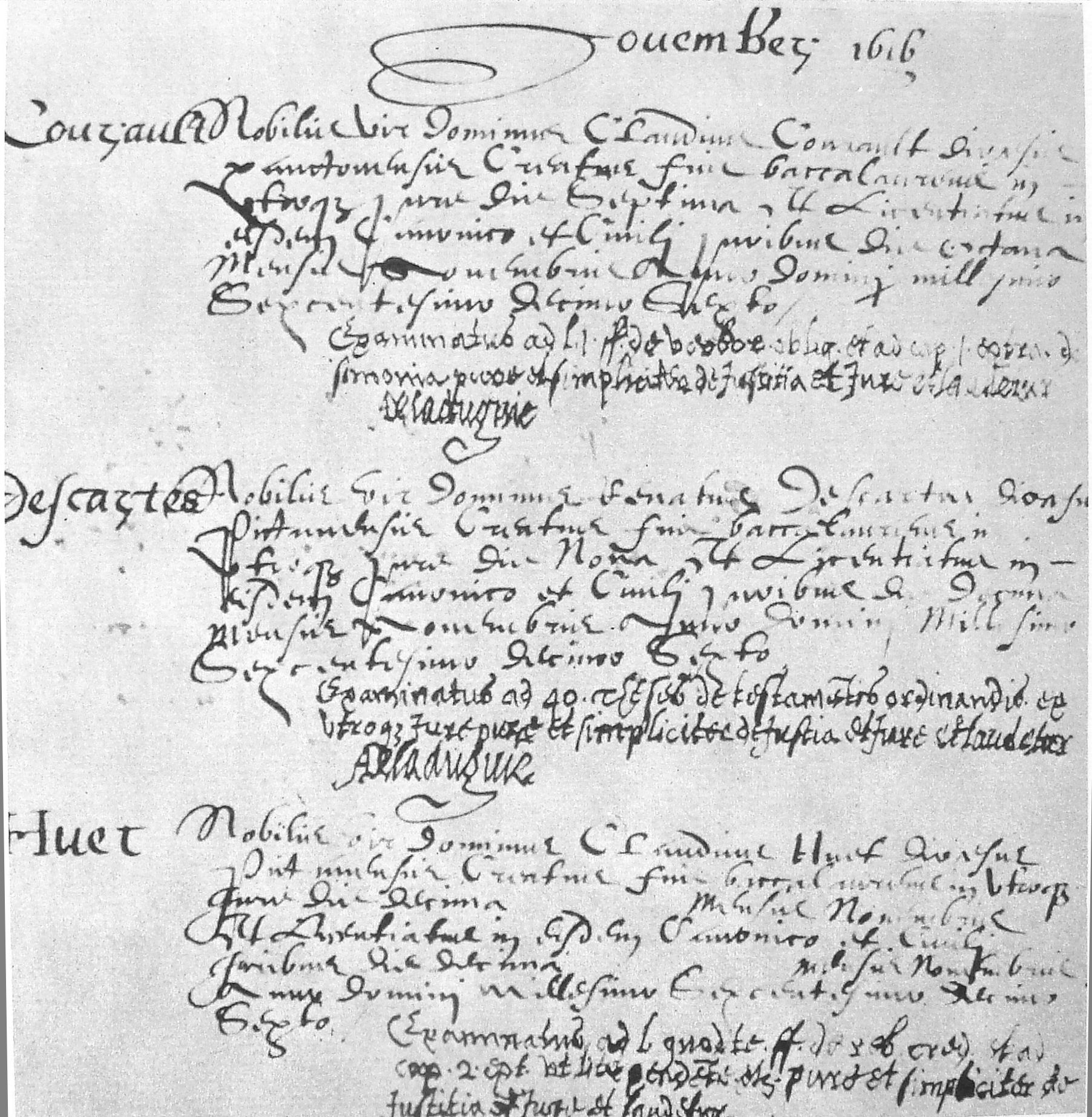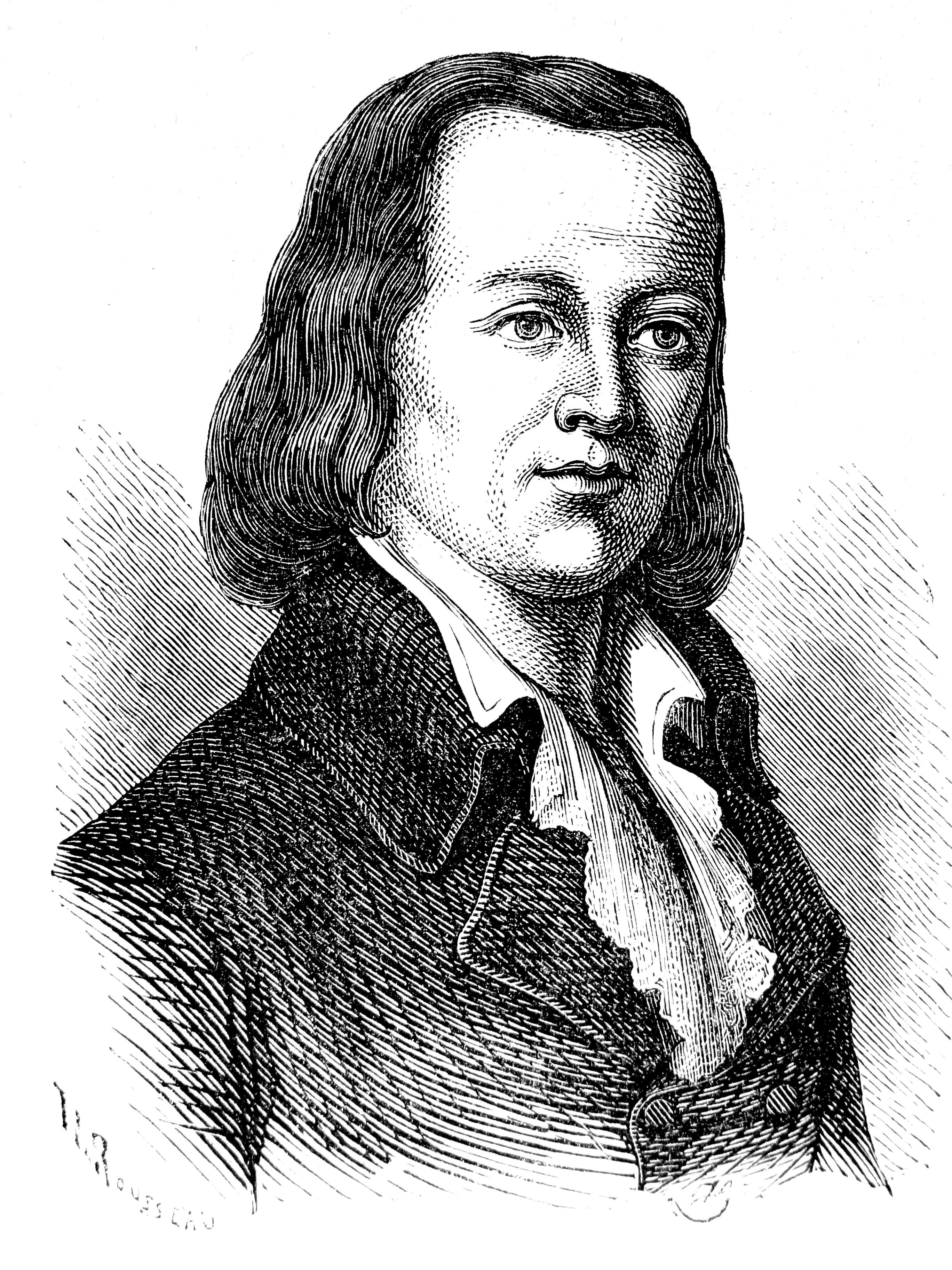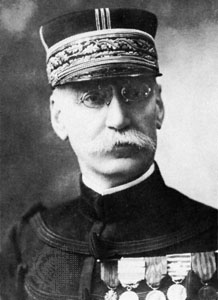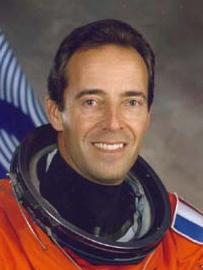Prytanée National Militaire on:
[Wikipedia]
[Google]
[Amazon]
The Prytanée national militaire is a French military school managed by the
 The first Jesuits left Pont-à-Mousson on 16 October 1603, and reached La Flèche on 2 January 1604. They started to teach grammar, rhetorics, Latin, Greek,
The first Jesuits left Pont-à-Mousson on 16 October 1603, and reached La Flèche on 2 January 1604. They started to teach grammar, rhetorics, Latin, Greek,  René Descartes was one of the first and most illustrious students of the school from 1607 to 1615, and introduced the school in his Discourse on Method under the phrase "I was studying in one of the most celebrated schools in Europe".
The College continued to expand, and, upon the death of Henry IV, a vast church was built, in which the hearts of Henry IV and his wife queen Marie de Medicis were enshrined.
René Descartes was one of the first and most illustrious students of the school from 1607 to 1615, and introduced the school in his Discourse on Method under the phrase "I was studying in one of the most celebrated schools in Europe".
The College continued to expand, and, upon the death of Henry IV, a vast church was built, in which the hearts of Henry IV and his wife queen Marie de Medicis were enshrined.



 Today the Prytanée provides secondary education and also has "
Today the Prytanée provides secondary education and also has "
File:PrytaneeSergentMajorInsignas.JPG, Sergent-Major insignas
File:PrytaneeShoulderBadge.JPG, Colored shoulder badge, with a "Navy" anchor




 The Prytanée has trained various military and non-military celebrities. In chronological order:
* Marin Mersenne (1588–1648), theologian, mathematician
* Pierre Séguier, statesman and Chancellor of France (1588–1672)
* René Descartes, philosopher (1596–1650)
* Comte de Guébriant (1602–1643), Marshal of France
* La Rochefoucauld (1613–1680), writer
*
The Prytanée has trained various military and non-military celebrities. In chronological order:
* Marin Mersenne (1588–1648), theologian, mathematician
* Pierre Séguier, statesman and Chancellor of France (1588–1672)
* René Descartes, philosopher (1596–1650)
* Comte de Guébriant (1602–1643), Marshal of France
* La Rochefoucauld (1613–1680), writer
*
History and alumni of the Prytanée
{{DEFAULTSORT:Prytanee National Militaire Lycées in Pays de la Loire Buildings and structures in Sarthe Educational institutions established in the 1600s 1604 establishments in France Boarding schools in France Education in Pays de la Loire Military high schools
French military
The French Armed Forces (french: Forces armées françaises) encompass the Army, the Navy, the Air and Space Force and the Gendarmerie of the French Republic. The President of France heads the armed forces as Chief of the Armed Forces.
France ...
, offering regular secondary education as well as special preparatory classes
Preparatory school or prep school may refer to: Schools
*Preparatory school (United Kingdom), an independent school preparing children aged 8–13 for entry into fee-charging independent schools, usually public schools
*College-preparatory school, ...
, equivalent in level to the first years of university, for students who wish to enter French military academies
A military academy or service academy is an educational institution which prepares candidates for service in the officer corps. It normally provides education in a military environment, the exact definition depending on the country concerned. ...
. The school is located in western France in the city of La Flèche.
At first founded in 1604 by the king Henri IV
Henry IV (french: Henri IV; 13 December 1553 – 14 May 1610), also known by the epithets Good King Henry or Henry the Great, was King of Navarre (as Henry III) from 1572 and King of France from 1589 to 1610. He was the first monarch ...
, the school was given to the Jesuits in the aim to "instruct the young people and make it fall in love with sciences, honour and virtue, in order to be able to serve". It then became the "Prytanée" wanted by Napoleon in 1800.
History
From the Château-Neuf to the creation of the royal college
Françoise d'Alençon, who had become a widow in 1537, decided to retire in her land ofLa Flèche
La Flèche () is a town and commune in the French department of Sarthe, in the Pays de la Loire region in the Loire Valley. It is the sub-prefecture of the South-Sarthe, the chief district and the chief city of a canton, and the second most popu ...
, which she had received as a gift from her husband Charles de Bourbon.Pierre Schilte, ''Le Château-Neuf de Françoise d'Alençon'', Cahiers Fléchois no. 1, 1979. The old feodal castle, actually Château des Carmes, was too old and with no comfort, Françoise d'Alençon ordered the construction of a new building. The "Château-Neuf" (New Castle) was erected between 1539 and 1541 outside of the city, in the place of the Prytanée Militaire and following the plans of the architect Jean Delespine. Some recent new elements give a better idea of the original castle and garden..
In 1550, after her death, her son Antoine of Navarre
Antoine de Bourbon, roi de Navarre (22 April 1518 – 17 November 1562) was the King of Navarre through his marriage (''jure uxoris'') to Queen Jeanne III, from 1555 until his death. He was the first monarch of the House of Bourbon, of which he wa ...
inherits of her possessions. With his wife Jeanne d'Albret, inheriter of the Kingdom of Navarre, he stays in La Flèche multiple times, as in February 1552 and then in May 1553, a few months before their son's birth, the future king Henri IV
Henry IV (french: Henri IV; 13 December 1553 – 14 May 1610), also known by the epithets Good King Henry or Henry the Great, was King of Navarre (as Henry III) from 1572 and King of France from 1589 to 1610. He was the first monarch ...
.
On 3 December 1603, by letters patent sent from Rouen, Henri IV authorised the return of the Jesuits, who had been banned by the parliament of Paris in 1594 after the failed attack against the King made by one of their latter pupils, Jean Châtel. The King allows them to live in the places where they were before their departure and in other cities. Henri IV recommends them to particularly stay in his house of La Flèche in order to establish their college..
The first Jesuits priests arrive to La Flèche in the beginning of November 1603,. led by Pierre Barny, named rector of the college. In January 1604, the college welcomes its first students. From its first year, the college knows a success and counts around 1 000 pupils. Their number grows fast in the following years..
The Jesuit College (1604–1762)
 The first Jesuits left Pont-à-Mousson on 16 October 1603, and reached La Flèche on 2 January 1604. They started to teach grammar, rhetorics, Latin, Greek,
The first Jesuits left Pont-à-Mousson on 16 October 1603, and reached La Flèche on 2 January 1604. They started to teach grammar, rhetorics, Latin, Greek, Hebrew
Hebrew (; ; ) is a Northwest Semitic language of the Afroasiatic language family. Historically, it is one of the spoken languages of the Israelites and their longest-surviving descendants, the Jews and Samaritans. It was largely preserved ...
, philosophy, mathematics, and theology. A foundation edict was issued at Fontainebleau in May 1607, in which the building started to take its present shape.
Missions to China and the Americas
Many of the Jesuit missionaries who went to the China during the 17th century had been trained at the College.Shenwen Li, p.45 Among them were Énemond Massé, who became an early missionary to Canada and became Minister of the College upon his return in 1614. When he went back to Canada, he was accompanied byCharles Lalemant
Charles Lallemant (or Lalemant), (November 17, 1587 – November 18, 1674) was a French Jesuit. He was born in Paris in 1587 and later became the first Superior of the Jesuit Missions amongst the Huron in Canada. His letter to his brother, ...
, another alumnus of the school. Paul Le Jeune, also a student of the College, is considered as the "father of the Jesuit missions in New France", and was the Superior of the Jesuits in Quebec from 1632 to 1639.Shenwen Li, p.46 Others were Erard Bille, Jacques Buteux, Nicolas Adam, Barthélemy Vimont, Paul Ragueneau
Paul Ragueneau (18 March 1608 – 3 September 1680) was a Catholic Jesuit missionary.
Biography
He was born in Paris and died in the same city. He is sometimes confused with his elder brother François, also a Jesuit. Father François Ragueneau ...
, Claude de Quentin, Isaac Jogues
Isaac Jogues, S.J. (10 January 1607 – 18 October 1646) was a French missionary and martyr who traveled and worked among the Iroquois, Huron, and other Native populations in North America. He was the first European to name Lake George, c ...
.
In China also, numerous students of the College became active participants in the missions. Three of the five Jesuits sent by Louis XIV
, house = Bourbon
, father = Louis XIII
, mother = Anne of Austria
, birth_date =
, birth_place = Château de Saint-Germain-en-Laye, Saint-Germain-en-Laye, France
, death_date =
, death_place = Palace of Ver ...
to China were from the Collège: Jean de Fontaney
Jean de Fontaney (1643–1710) was a French Jesuit who led a mission to China in 1687.Mungello, p. 329
Jean de Fontaney had been a teacher of mathematics and astronomy at the College Louis le Grand. He was asked by king Louis XIV to set up a mi ...
, the Superior of the mission, who had been a professor of mathematics there and became rector of the school until 1710 after his return from China; Joachim Bouvet
Joachim Bouvet (, courtesy name: 明远) (July 18, 1656, in Le Mans – June 28, 1730, in Peking) was a French Jesuit who worked in China, and the leading member of the Figurist movement.
China
Bouvet came to China in 1687, as one of six Jesuit ...
, who was a philosophy student in 1676, became a teacher to the Kangxi Emperor
The Kangxi Emperor (4 May 1654– 20 December 1722), also known by his temple name Emperor Shengzu of Qing, born Xuanye, was the third emperor of the Qing dynasty, and the second Qing emperor to rule over China proper, reigning from 1661 to 1 ...
; Claude Visdelou, who was a repetitor and a teacher at the school from 1676 to 1678. Others included Guillaume le Couteux, Pierre Foureau, Charles de Broissia, Emeric de Chavagnac, Jean-François Fouquet, and Joseph Labbe.
Around 1650, the College became a centre of cosmopolitan learning, as "Americans, Indians, Tartars, Russians, and even Chinese visited it". In 1751, two Chinese students were enrolled: Yang Dewang (Etienne Yang Tche-teh), and Gao Ren (Louis Kao Fen).Shenwen Li, p.37



Cadets school (1764–1776)
In 1764 following the expulsion of the Jesuits, after a lapse of two years, the school was transformed by Louis XV and Choiseul into a military institution designed to train youngcadet
A cadet is an officer trainee or candidate. The term is frequently used to refer to those training to become an officer in the military, often a person who is a junior trainee. Its meaning may vary between countries which can include youths in ...
s for admission to the École Militaire
École may refer to:
* an elementary school in the French educational stages normally followed by secondary education establishments (collège and lycée)
* École (river), a tributary of the Seine flowing in région Île-de-France
* École, Savoi ...
, the "École de cadets ou École militaire préparatoire à l’École militaire du Champ de Mars". These efforts at creating military institutions followed military defeats in the Seven Years' War (1756–1763). The school was reserved to 250 students of noble extraction, as well as sons of officers who were wounded or died in combat, and the sons of the Chevaliers de Saint-Louis.
College (1776–1793)
In 1776 the Count of St Germain attempted to close the school, but it was re-established by Louis XVI, who gave its management to the "Fathers of the Christian Doctrine" (''Pères de la Doctrine chrétienne''). Among others, they educated the future General Bertrand, who accompaniedNapoléon
Napoleon Bonaparte ; it, Napoleone Bonaparte, ; co, Napulione Buonaparte. (born Napoleone Buonaparte; 15 August 1769 – 5 May 1821), later known by his regnal name Napoleon I, was a French military commander and political leader who ...
to Saint Helena, and the two Chappe brothers, who invented the aerial telegraph.
The College was closed in 1793 following the advent of the French revolution. For a while, the buildings were used for a variety of purposes, such as becoming a cordonery for the Army of the Republic.
Prytanée militaire (1808–present)
On 24 March 1808,Napoléon
Napoleon Bonaparte ; it, Napoleone Bonaparte, ; co, Napulione Buonaparte. (born Napoleone Buonaparte; 15 August 1769 – 5 May 1821), later known by his regnal name Napoleon I, was a French military commander and political leader who ...
renamed the school "Prytanée militaire", in a classic reference to the Greek prytaneis
The ''prytaneis'' (πρυτάνεις; sing.: πρύτανις ''prytanis'') were the executives of the '' boule'' of ancient Athens.
Origins and organization
The term (like ''basileus'' or '' tyrannos'') is probably of Pre-Greek etymology (pos ...
(literally "Presidents"), an executive body acting as the religious and political heart of ancient Greek cities. As Napoleon had moved to Fontainebleau to establish his court, he had decided to transfer the "École spéciale Militaire de Fontainebleau" to Paris, and the "Prytanée de Saint-Cyr" to La Flèche. Since then various names were adopted for the school, such as "École royale militaire" (1814–1830), Collège royal militaire (1831–1848), Collège national militaire (1848–1853), Prytanée impérial militaire (1853–1870), Prytanée militaire and Prytanée national militaire (since 1870).
During World War II in 1940, the Prytanée had to be moved for a few years successively to Billom
Billom (; Auvergnat: ''Bilhom'') is a commune in the Puy-de-Dôme department in the Auvergne-Rhône-Alpes region in central France.
Population
Notable natives
Billom was the birthplace of the philosopher Georges Bataille. It was also the birth ...
, Valence, then Briançon
Briançon (, ) is the sole subprefecture of the Hautes-Alpes department in the Provence-Alpes-Côte d'Azur region in Southeastern France. It is the highest city in France at an altitude of , based on the national definition as a community contai ...
.
Today
 Today the Prytanée provides secondary education and also has "
Today the Prytanée provides secondary education and also has "Classes préparatoires
Class or The Class may refer to:
Common uses not otherwise categorized
* Class (biology), a taxonomic rank
* Class (knowledge representation), a collection of individuals or objects
* Class (philosophy), an analytical concept used differently ...
", that is, preparatory classes to the entrance examinations of the French elite Grandes Écoles Grandes may refer to:
*Agustín Muñoz Grandes
Agustín Muñoz Grandes (27 January 1896 – 11 July 1970) was a Spanish general, and politician, vice-president of the Spanish Government and minister with Francisco Franco several times; also know ...
, such as École polytechnique, the Navy École navale, the Army École spéciale militaire de Saint-Cyr, the École de l'Air
École may refer to:
* an elementary school in the French educational stages normally followed by secondary education establishments (collège and lycée)
* École (river), a tributary of the Seine flowing in région Île-de-France
* École, Savo ...
and various civilian engineering or commercial graduate schools.
The school's students are nicknamed "Brutions", as a classic reference to the inhabitants of the Bruttium 01 or '01 may refer to:
* The year 2001, or any year ending with 01
* The month of January
* 1 (number)
Music
* 01'' (Richard Müller album), 2001
* ''01'' (Son of Dave album), 2000
* ''01'' (Urban Zakapa album), 2011
* ''O1'' (Hiroyuki Sawa ...
region of Roman Italy, who had a reputation for their roughness and fighting spirit.
Insignas
The school grades received by students are even today symbolized by military insignias which are worn on the traditional uniform (''Uniforme de tradition''), starting with "Sergent-Major" (4 goldenchevrons
Chevron (often relating to V-shaped patterns) may refer to:
Science and technology
* Chevron (aerospace), sawtooth patterns on some jet engines
* Chevron (anatomy), a bone
* '' Eulithis testata'', a moth
* Chevron (geology), a fold in rock l ...
) for the top of a class, "Sergent" (3 golden chevrons), "Caporal-Chef" (2 red and 1 golden chevrons), and finally "Caporal" (2 red chevrons). Typically, the top ten students of each class during a given quarter would receive such insignias.
Students also have colored shoulder badges for each year, attached to the daily fatigues
Workwear is clothing worn for work, especially work that involves manual labour. Often those employed within trade industries elect to be outfitted in workwear because it is built to provide durability and safety.
The workwear clothing industry i ...
("Uniforme de travail"), starting with blue for the first year of high school, orange for the second, and green for the third. These badges can further be adorned with various small symbols and decorations, especially expressing the type of career to which each student is aspires.
Famous alumni



 The Prytanée has trained various military and non-military celebrities. In chronological order:
* Marin Mersenne (1588–1648), theologian, mathematician
* Pierre Séguier, statesman and Chancellor of France (1588–1672)
* René Descartes, philosopher (1596–1650)
* Comte de Guébriant (1602–1643), Marshal of France
* La Rochefoucauld (1613–1680), writer
*
The Prytanée has trained various military and non-military celebrities. In chronological order:
* Marin Mersenne (1588–1648), theologian, mathematician
* Pierre Séguier, statesman and Chancellor of France (1588–1672)
* René Descartes, philosopher (1596–1650)
* Comte de Guébriant (1602–1643), Marshal of France
* La Rochefoucauld (1613–1680), writer
*François de Laval
Francis-Xavier de Montmorency-Laval, commonly referred to as François de Laval (30 April 1623 – 6 May 1708), was a French prelate of the Catholic Church. Consecrated a bishop in 1658, he led the Apostolic Vicariate of New France from 1658 to ...
(1623–1708), first Bishop of New France
The Archdiocese of Québec ( la, Archidiœcesis Quebecensis; french: Archidiocèse de Québec) is a Catholic archdiocese in Quebec, Canada. Being the first see in the New World north of Mexico, the Archdiocese of Québec is also the primatial se ...
*Jean Picard
Jean Picard (21 July 1620 – 12 July 1682) was a French astronomer and priest born in La Flèche, where he studied at the Jesuit Collège Royal Henry-Le-Grand.
He is principally notable for his accurate measure of the size of the Earth, bas ...
(1629–1682), astronomer
* Joseph Sauveur (1653–1716), mathematician and physicist
* James Fitz-James (1670–1734), Duke of Berwick
Duke of Berwick () ''()'' is a title that was created in the Peerage of England on 19 March 1687 for James FitzJames, the illegitimate son of James II and VII, King of England, Scotland, and Ireland and Arabella Churchill. The title's name r ...
and Marshal of France
* du Petit Thouars (1760–1798), Navy officer, hero of the Battle of Aboukir Bay
*Claude Chappe
Claude Chappe (; 25 December 1763 – 23 January 1805) was a French inventor who in 1792 demonstrated a practical semaphore system that eventually spanned all of France. His system consisted of a series of towers, each within line of sight o ...
(1763–1805), inventor of the optical telegraph
* Bertrand (1773–1844), General, follower of Napoleon at Saint Helena
* Auguste Davezac (1780–1851), United States Ambassador to the Netherlands
* Pélissier (1794–1864), Marshal of France
* René François Regnier (1794–1881), ecclesiastical writer
*Achille Baraguey d'Hilliers
Louis-Achille Baraguey d'Hilliers (6 September 1795 – 6 June 1878), 1st Comte Baraguey d'Hilliers, was a Marshal of France and politician.
Baraguey d'Hilliers was born in Paris, the son of the French revolutionary general Louis Baraguey d'Hil ...
(1795–1878), Marshal of France
*Antoine Brutus Menier
Jean-Antoine Brutus Menier (May 17, 1795 – December 19, 1853) was a French entrepreneur and founder of the Menier family of chocolatiers. Born in Germain-de-Bourgeuil, Indre-et-Loire, he was the third child in a family of merchants. In 1811 A ...
(1795–1853), entrepreneur and founder of Chocolat Menier
*Antoine François Prévost
Antoine is a French given name (from the Latin ''Antonius'' meaning 'highly praise-worthy') that is a variant of Danton, Titouan, D'Anton and Antonin.
The name is used in France, Switzerland, Belgium, Canada, West Greenland, Haiti, French Guiana ...
(1797–1863), novelist
* Alessandro Barnabò (1801–1874), Catholic Cardinal
A cardinal ( la, Sanctae Romanae Ecclesiae cardinalis, literally 'cardinal of the Holy Roman Church') is a senior member of the clergy of the Catholic Church. Cardinals are created by the ruling pope and typically hold the title for life. C ...
*Louis d'Aurelle de Paladines
Louis Jean-Baptiste d'Aurelle de Paladines (9 January 1804 – 17 December 1877) was a French general.
Life
He was born at Le Malzieu-Ville, Lozère, educated at the Prytanée National Militaire and St Cyr, and entered the army as sub-lieut ...
(1804–1877), General
* Courtot de Cissey (1810–1882), General
*Charles-Denis Bourbaki
Charles Denis Sauter Bourbaki (22 April 1816, Pau – 22 September 1897, Bayonne) was a French general.
Career
Bourbaki was born at Pau, the son of Greek colonel Constantin Denis Bourbaki, who died in the War of Independence in 1827. He wa ...
(1816–1897), General
* Adrien Joseph Deutsch (1818–1895)
*Louis Rossel
Louis-Nathaniel Rossel (9 September 1844 28 November 1871) was a French army officer and a politician. On 19 March 1871, he became the only senior French officer to join up with the Paris Commune, playing an important role as Minister of Wa ...
(1844–1871), Minister of War in the Paris Commune
The Paris Commune (french: Commune de Paris, ) was a revolutionary government that seized power in Paris, the capital of France, from 18 March to 28 May 1871.
During the Franco-Prussian War of 1870–71, the French National Guard had defended ...
*Gallieni
Joseph Simon Gallieni (24 April 1849 – 27 May 1916) was a French soldier, active for most of his career as a military commander and administrator in the French colonies. Gallieni is infamous in Madagascar as the French military leader who e ...
(1849–1916), Marshal of France
*Amédée-François Lamy
Amédée-François Lamy was a French military officer. He was born at Mougins, in the French ''département'' of Alpes-Maritimes on 7 February 1858 and died in the battle of Kousséri on 22 April 1900.
Early years
Lamy's ambition to become a ...
(1858–1900), French officer, conqueror of Chad
*Georges Catroux
Georges Albert Julien Catroux (29 January 1877 – 21 December 1969) was a French Army general and diplomat who served in both World War I and World War II, and served as Grand Chancellor of the Légion d'honneur from 1954 to 1969.
Life
C ...
(1877–1969), French general
* Gabriel Voisin (1880–1973), aeronautical pioneer
*Émile Mireaux
Émile Mireaux (21 August 1885 – 27 December 1969) was a French economist, journalist, politician and literary historian.
In the 1930s he edited ''Le Temps'' and contributed to other right-leaning journals.
He became a senator in 1936, and briefl ...
(1885–1969), economist, Minister of Education
* Prince Husain Bey (1893-1964/9), Crown Prince of Tunisia
*Jacques Massu
Jacques Émile Massu (; 5 May 1908 – 26 October 2002) was a French general who fought in World War II, the First Indochina War, the Algerian War and the Suez crisis. He led French troops in the Battle of Algiers, first supporting and later ...
(1908–2002), General
*Pierre Guillaumat
Pierre Guillaumat (5 August 1909 – 28 August 1991) was a Minister of National Education and Minister of the Armies under French President Charles de Gaulle and founder of the Elf Aquitaine oil company in 1967. He was born in La Flèche, Sa ...
(1909–1991), entrepreneur and statesman (Minister of the Army, Education)
*Kléber Haedens
Kléber Haedens (11 December 1913 in Équeurdreville – 13 August 1976), was a French novelist and journalist. He was a monarchist and a member of the Action Française in the 1930s. During World War II he worked as a secretary for Charles Maurra ...
(1913–1973), writer
* François Missoffe (1919–2003), statesman
*Jean-Claude Brialy
Jean-Claude Brialy (30 March 1933 – 30 May 2007) was a French actor and film director.
Early life
Brialy was born in Aumale (now Sour El-Ghozlane), French Algeria, where his father was stationed with the French Army. Brialy moved to mainland ...
(1933–2007), actor
*Michel Virlogeux
Dr. Michel Virlogeux FREng CorrFRSE (born 1946, Vichy, Allier, Auvergne) is a French structural engineer and bridge specialist.
Career
Virlogeux graduated from the ''École Polytechnique'' in 1967 and from the ''École Nationale des Ponts et Ch ...
(1946–), architect of Millau Viaduct, the tallest vehicular bridge in the world
*Patrick Baudry (1946–), astronaut
*Antoine Compagnon (1950–), writer
*Jean-François Clervoy (1958–), astronaut
*Caroline Aigle (1974–2007), first French female fighter pilot
* Rodolphe Belmer (1969–), Canal+ program director general
Famous professors
*Pierre Laromiguière (1756–1837) *Léon Fleuriot (1923–1987)See also
* List of Jesuit sitesNotes
On vit arriver au Collège "des Américains, des Indiens, des Tartares, des Russes et même des Chinois", Marchant de Burbure (1803)References
*Li, Shenwen, 2001, ''Stratégies missionnaires des Jésuites Français en Nouvelle-France et en Chine au XVIIieme siècle'', Les Presses de l'Université Laval, L'Harmattan,External links
History and alumni of the Prytanée
{{DEFAULTSORT:Prytanee National Militaire Lycées in Pays de la Loire Buildings and structures in Sarthe Educational institutions established in the 1600s 1604 establishments in France Boarding schools in France Education in Pays de la Loire Military high schools